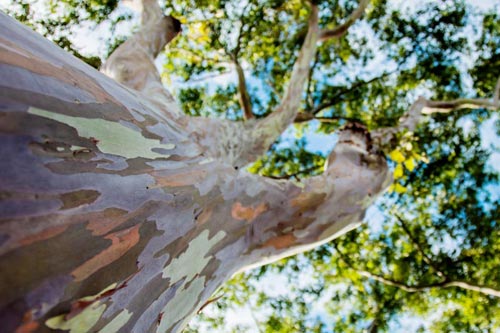
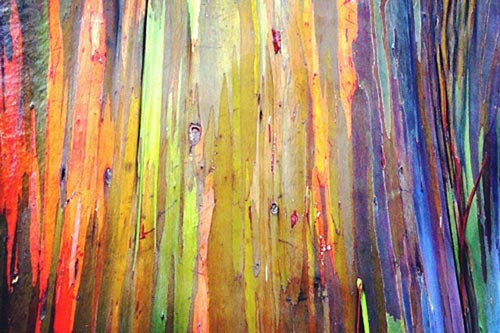
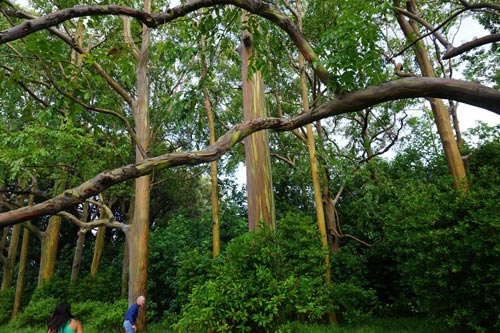
“Is the rainbow eucalyptus real?” It’s one the most popular questions asked about the mysterious and mystifying rainbow eucalyptus — a tree you see in pictures on the internet that leaves you wondering if they were digitally enhanced. Yes! The rainbow eucalyptus is real! And it’s a sight that makes you stare in awe and utter one single word — “Wow!”

The rainbow eucalyptus is one of the most uniquely attractive trees to the naked eye. Intense in the radiant colors of its bark and astringent in the fragrance emitted from its tiny white flowers, this beauty is bound to stand out amid its neighboring leafy companions. The vibrant colors of the rainbow eucalyptus rest in its newly-formed layer of bark. As the tree undresses itself in what’s coined “the peeling process,” the previous season’s old, dull layers of bark shed off, revealing vertical, fluorescent streaks of red, orange, green, blue, and gray.
Who wouldn’t want a cluster of these remarkable trees in their backyard? I would sure love to look out my window to see splashes of rainbow nestled around the flower beds. But as vibrant and fascinating as these trees are, they really do best in tropical, wet environments, such as on the island of Mindanao in the Philippines (from where it derived its scientific name, Mindanao gum), New Guinea, Indonesia, and closer to home in the Hawaiian Islands. On the popular Road to Hana in Maui, these trees are a favorite display to see amongst tourists and locals alike.
While the rainbow eucalyptus thrives in the tropics, did you know that they can also be found in San Diego and around Southern California? The world-famous San Diego Zoo is home to these beauties, and you can even spot them lining the Valley View Casino Center’s parking lot. However, since the dry California climate is far from their ideal, their bright colors are more toned down, so identifying them doesn’t come as easily as it would in Hawaii or the Philippines.
The tree’s vibrancy isn’t the only characteristic that is toned down in drier terrain — so is their stature. In the tropics, these trees can shoot up to 250-feet tall, but in dry regions, its height potential is drastically cut in half to around 125 feet.
If you are contemplating adding these decorative trees to your property, there are a few factors that you have to consider. If you live in a dry region, it is essential that you provide them with adequate amounts of water. Since they belong to the eucalyptus family, they can come with the same infamous problems associated with the eucalyptus trees if they are not well cared for. And due to its shallow root system, if grown close to structures or development, they can cause damage to sidewalks, pavement, and structure foundations. To avoid these root nuances, it is advisable that you plant them at least 30-feet away from any development. Needless to say, these trees are best suited for open wide spaces, such as in parks or most ideally, in a rainforest.
Tall in stature and colorful in nature, the rainbow eucalyptus is like the “unicorn of trees.” Their very existence is questionable. But these trees are real! And they’re a sight for sore eyes and a sight you remember when you spot them for the first time in their glory. So next time you take a visit to Maui or even the Philippines, see if you can locate them. Or if you can’t make a tropical oversees trip anytime soon, then keep your eye out for them around San Diego. They’re a rare find in this city and not as vibrant, but at least you can say that you actually saw the mysterious rainbow eucalyptus.
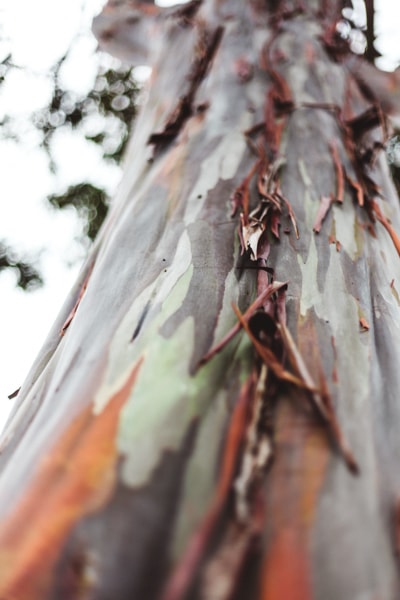
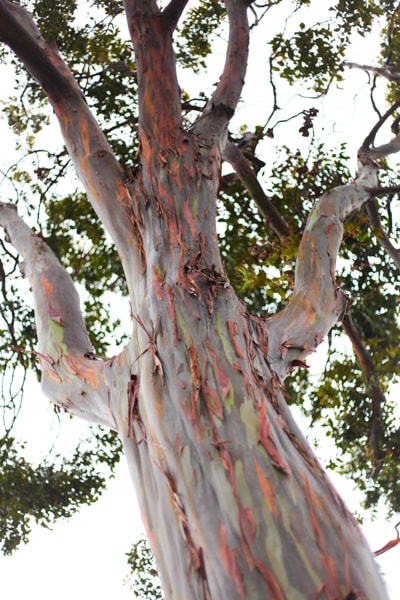
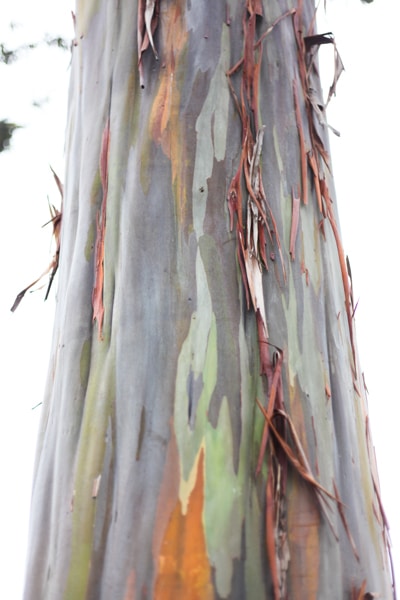
LOCAL SAN DIEGO RAINBOW EUCALYPTUS TREES
Location: Valley View Casino Center parking lot

